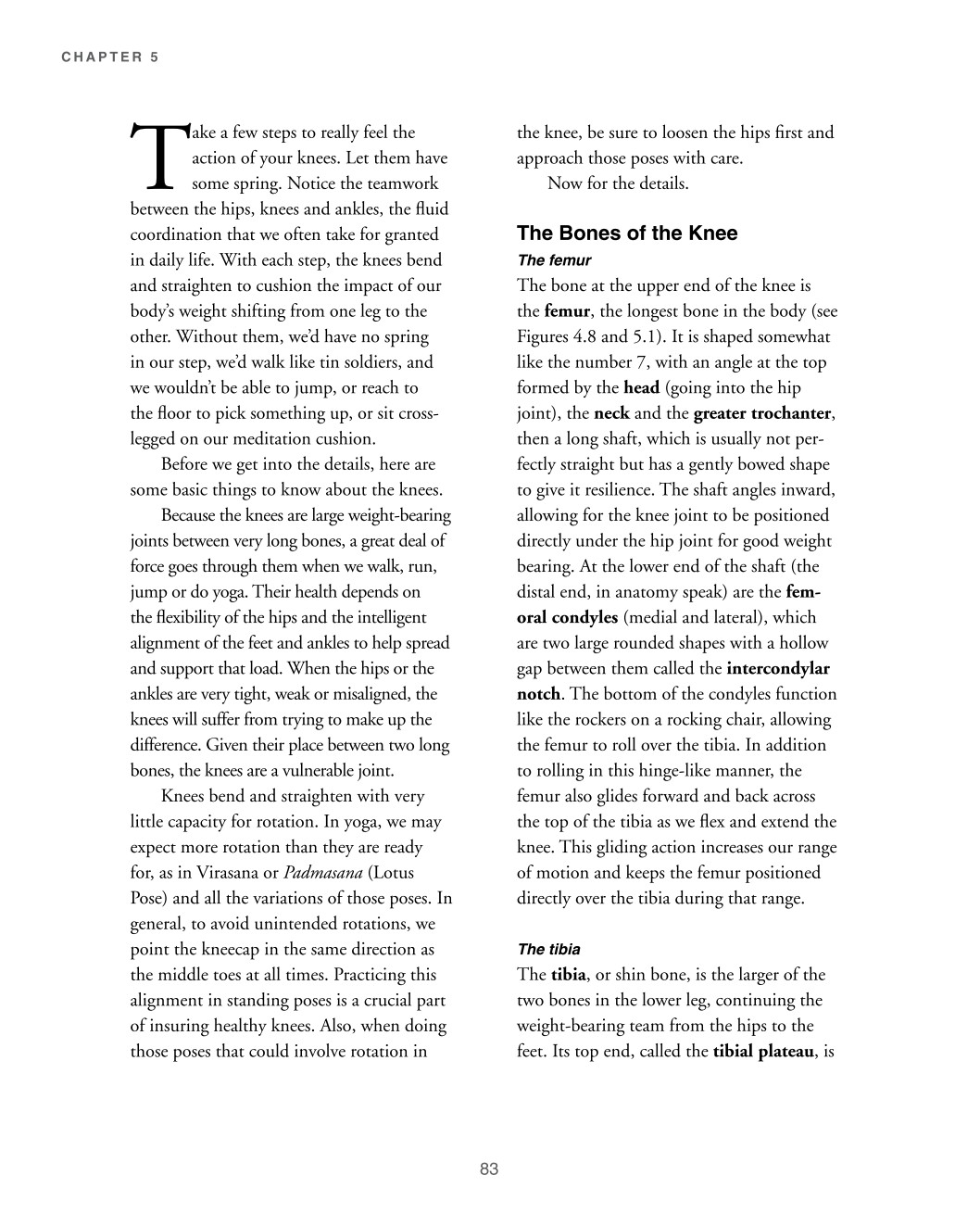

CHAPTER 5
T
ake a few steps to really feel the action of your knees. Let them have some spring. Notice the teamwork between the hips, knees and ankles, the fluid coordination that we often take for granted in daily life. With each step, the knees bend and straighten to cushion the impact of our body’s weight shifting from one leg to the other. Without them, we’d have no spring in our step, we’d walk like tin soldiers, and we wouldn’t be able to jump, or reach to the floor to pick something up, or sit cross- legged on our meditation cushion. Before we get into the details, here are some basic things to know about the knees. Because the knees are large weight-bearing joints between very long bones, a great deal of force goes through them when we walk, run, jump or do yoga. Their health depends on the flexibility of the hips and the intelligent alignment of the feet and ankles to help spread and support that load. When the hips or the ankles are very tight, weak or misaligned, the knees will suffer from trying to make up the difference. Given their place between two long bones, the knees are a vulnerable joint. Knees bend and straighten with very little capacity for rotation. In yoga, we may expect more rotation than they are ready for, as in Virasana or Padmasana (Lotus Pose) and all the variations of those poses. In general, to avoid unintended rotations, we point the kneecap in the same direction as the middle toes at all times. Practicing this alignment in standing poses is a crucial part of insuring healthy knees. Also, when doing those poses that could involve rotation in
the knee, be sure to loosen the hips first and approach those poses with care. Now for the details. The Bones of the Knee The femur The bone at the upper end of the knee is the femur, the longest bone in the body (see Figures 4.8 and 5.1). It is shaped somewhat like the number 7, with an angle at the top formed by the head (going into the hip joint), the neck and the greater trochanter, then a long shaft, which is usually not per- fectly straight but has a gently bowed shape to give it resilience. The shaft angles inward, allowing for the knee joint to be positioned directly under the hip joint for good weight bearing. At the lower end of the shaft (the distal end, in anatomy speak) are the fem- oral condyles (medial and lateral), which are two large rounded shapes with a hollow gap between them called the intercondylar notch. The bottom of the condyles function like the rockers on a rocking chair, allowing the femur to roll over the tibia. In addition to rolling in this hinge-like manner, the femur also glides forward and back across the top of the tibia as we flex and extend the knee. This gliding action increases our range of motion and keeps the femur positioned directly over the tibia during that range. The tibia The tibia, or shin bone, is the larger of the two bones in the lower leg, continuing the weight-bearing team from the hips to the feet. Its top end, called the tibial plateau, is
83